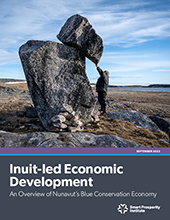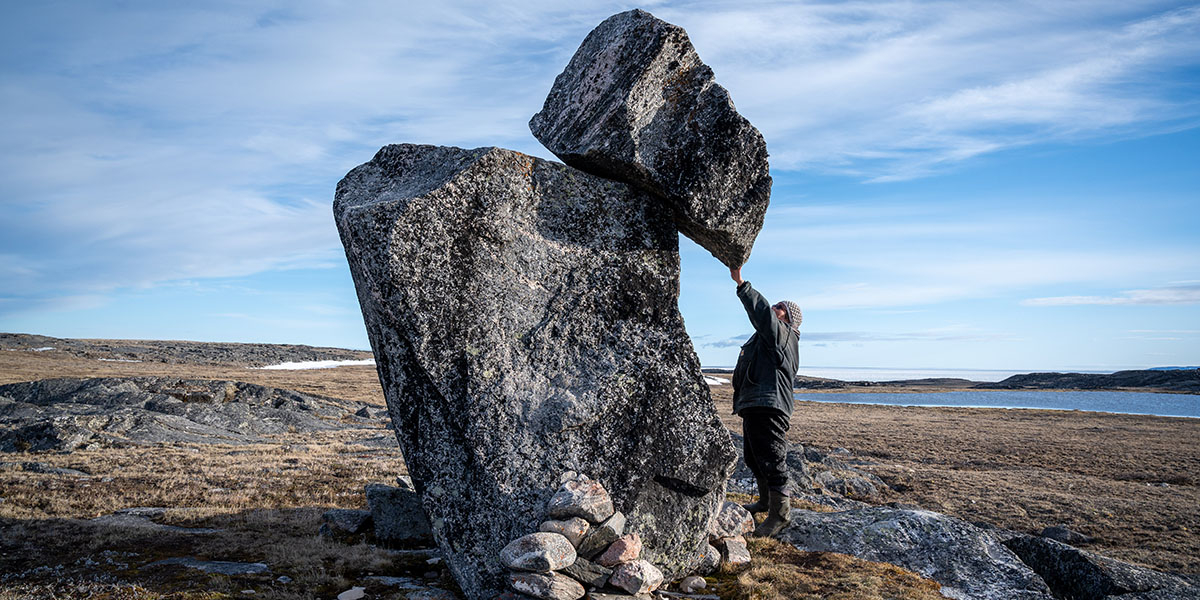(Photo credit: Emina Ida, WWF-Canada)
September 25, 2023
Blue conservation economies generate economic wealth for a region using natural resources from land and marine areas in a way that meets the needs of the local communities while conserving and restoring (not depleting) those resources.
With $1.35 billion in Canadian federal government funding to advance Indigenous-led conservation initiatives, Inuit communities in Nunavut are facing an unprecedented opportunity to build conservation economies that leverage traditional knowledge and skills to accelerate regional economic growth while advancing the stewardship of land and marine resources.
Spence Bay Hunters and Trappers Association manager, Jimmy Ullikatalik, explains the importance of protecting and conserving the area of Aviqtuuq for the community of Taloyoak, Nunavut.
A video about the blue conservation economy of Taloyoak, Nunavut from ArctiConnexion .
Our reports show that accelerating investments in conservation economies across the territory can provide several immediate benefits like providing more jobs, housing, and access to nutritious food, while supporting the environment and protecting Inuit culture and language for future generations.
A few opportunities are:
- Country food economies that are based on harvesting country food (e.g., caribou, muskox, seal, and Arctic char) and establishing processing facilities to prepare and distribute food in coastal Inuit communities that need greater access to nutritious food. Nunavut’s country food economy is currently valued at more than $200 million.
- Inuit Guardians programs that are conducting environmental research and monitoring, improving access to nutritious food, and creating job opportunities, while providing role models in local communities and aiding the transfer of traditional knowledge, culture, and language. Guardians programs in Taloyoak and Tallurutiup Imanga are already estimated to have generated a return on investment of $27 million.
- Tourism activities that are based on Nunavut’s wealth of natural landscapes and unique biodiversity and provide jobs that are in line with Inuit traditional values. Nunavut’s tourism industry is currently valued at $96 million.
Attracting investors with a successful business case for conservation economies hinges on clearly expressing the values of these economies and how they can contribute to a vision of regional economic development that prioritizes the long-term well-being of Inuit households.
Our new reports “Inuit-led Economic Development: An Overview of Nunavut’s Blue Conservation Economy” and “Conservation Economies in Nunavut: Aviqtuuq Case Study”, released with support from WWF-Canada and the Canadian Northern Economic Development Agency, explore the value of Nunavut’s blue conservation economy and highlight how communities in Nunavut are finding success with this approach.



